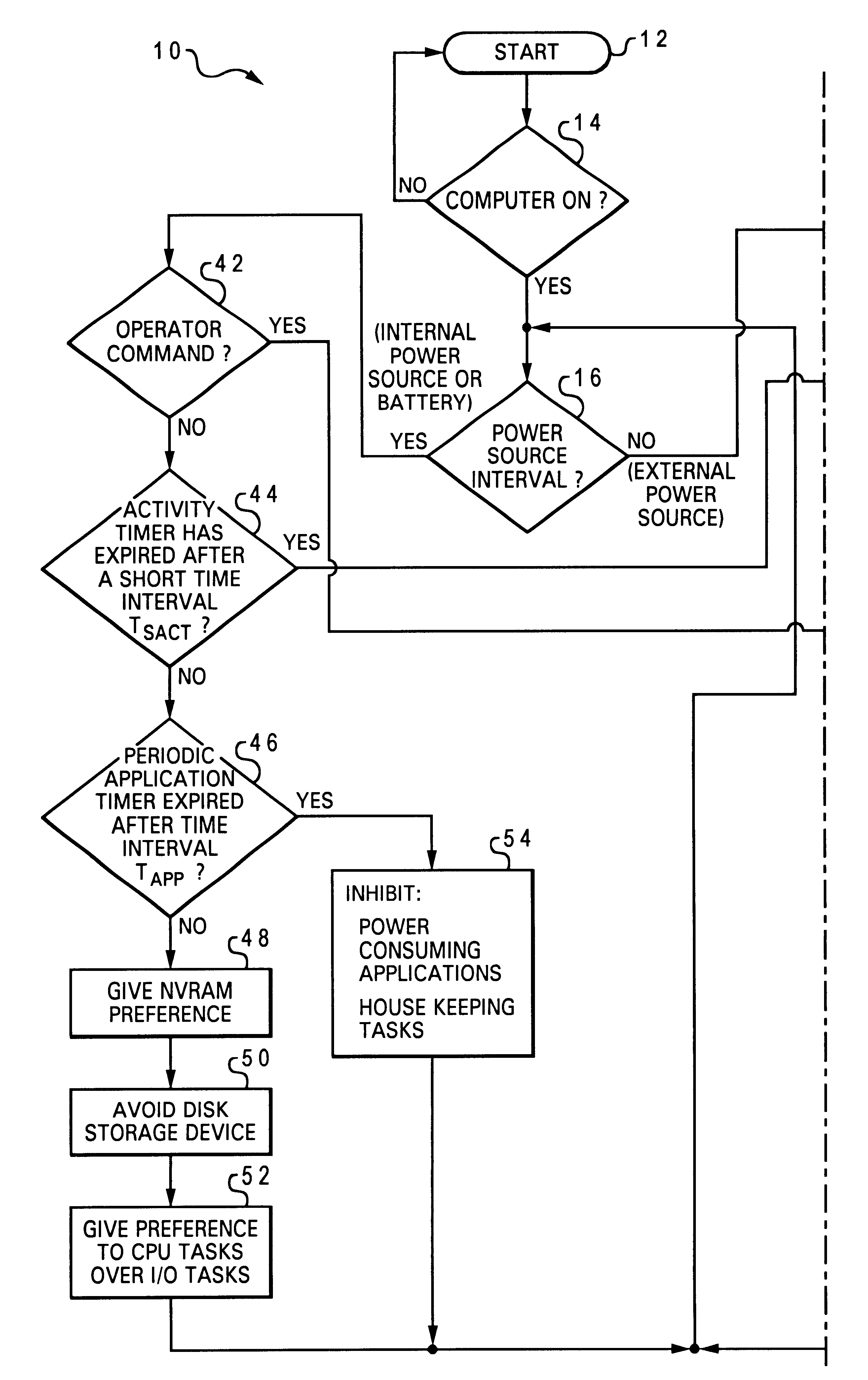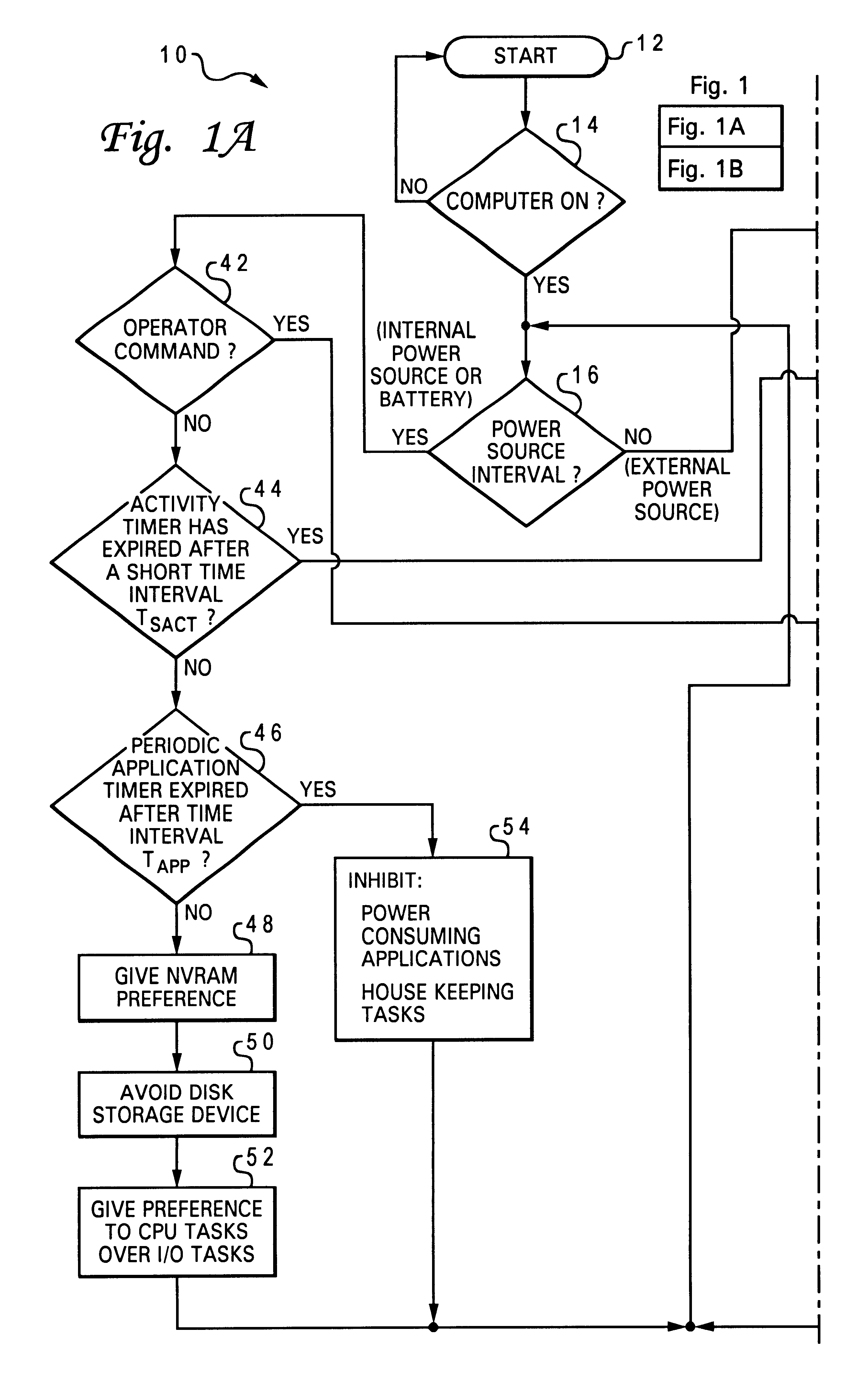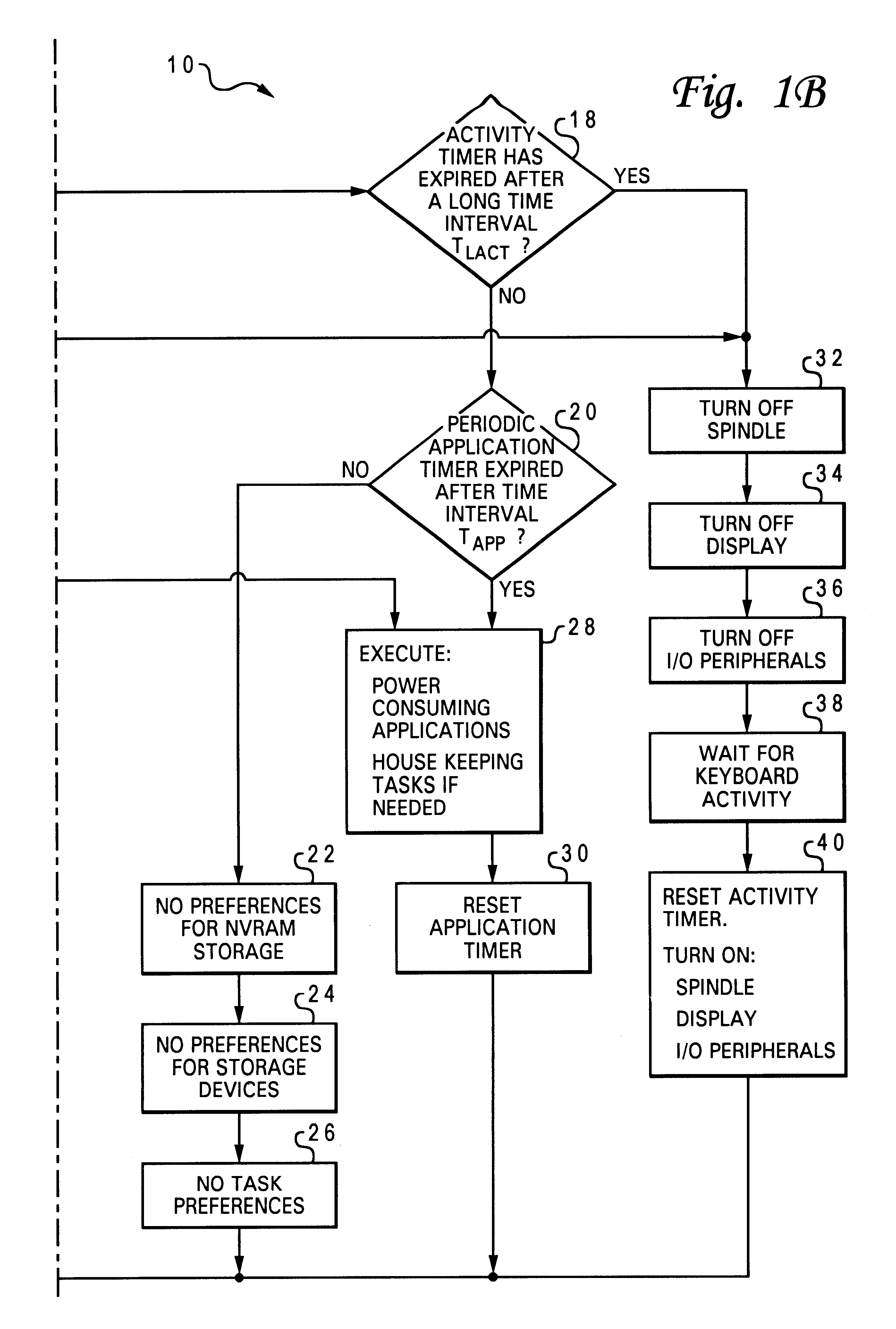Bi-level power saver method for portable or laptop computer
a portable or laptop computer and power saving technology, applied in the direction of power supply for data processing, liquid/fluent solid measurement, instruments, etc., can solve the problems of limited prior art methods and the computer inhibits the execution of the power saving process
- Summary
- Abstract
- Description
- Claims
- Application Information
AI Technical Summary
Benefits of technology
Problems solved by technology
Method used
Image
Examples
Embodiment Construction
With reference now to the figures and in particular with reference to FIG. 1, a bi-level power saver method or algorithm 10 for a computer, particularly a portable or laptop computer, is shown. The method or algorithm 10 starts at block 12. The method 10 determines whether the computer system 88 (shown in block form in FIG. 5) is "on" at decision block 14. If the computer 88 is not "on", then the method 10 loops back to the start block 12 to continue to sense and determine when the computer 88 is "on". If the computer 88 is "on", then the method 10 continues to decision block 16 where the method 10 determines whether the computer 88 is operating on an internal power source or an external power source.
If the computer 88 is operating on an internal power source or battery, then the method 10 moves to decision block 42 and the blocks following thereafter. These blocks will be discussed later in more detail. However, if the computer 88 is not operating on an internal power source and is...
PUM
 Login to View More
Login to View More Abstract
Description
Claims
Application Information
 Login to View More
Login to View More - R&D
- Intellectual Property
- Life Sciences
- Materials
- Tech Scout
- Unparalleled Data Quality
- Higher Quality Content
- 60% Fewer Hallucinations
Browse by: Latest US Patents, China's latest patents, Technical Efficacy Thesaurus, Application Domain, Technology Topic, Popular Technical Reports.
© 2025 PatSnap. All rights reserved.Legal|Privacy policy|Modern Slavery Act Transparency Statement|Sitemap|About US| Contact US: help@patsnap.com



